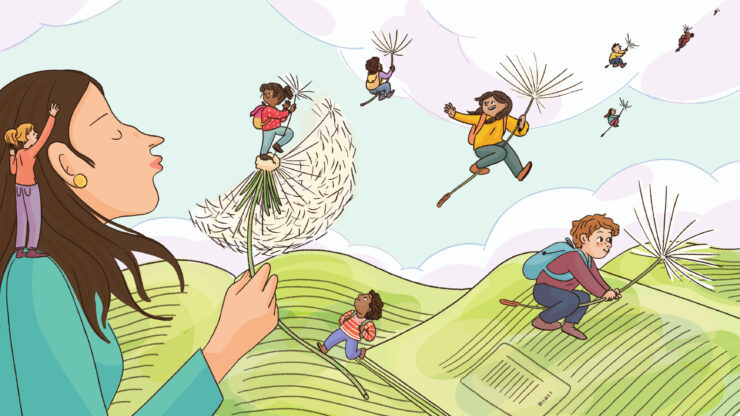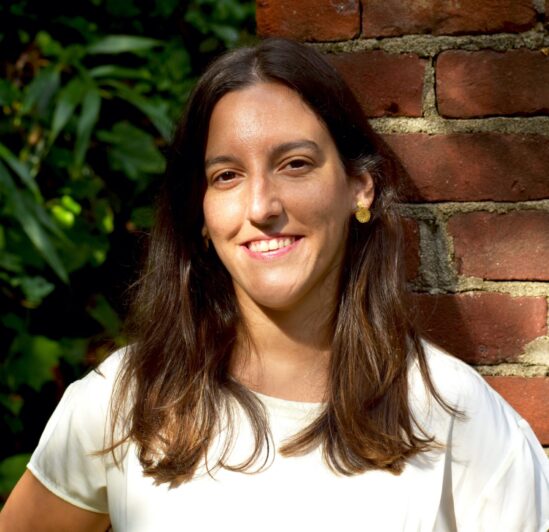The developmental psychologist improving early learning through classroom relationships
Pilar Alamos explores how teachers can help young children feel valued and empowered to learn

In her research, Pilar Alamos looks for ways to strengthen relationships between children and teachers to create early learning environments in which both can thrive. Aisha Schnellmann finds out more.
Aisha Schnellmann: Why are teacher-child relationships important?
Pilar Alamos: For many children around the world, early childhood education settings are the first environments outside of their family where they interact regularly with adults. These early interactions matter deeply; at this stage, children still rely on adults to help them regulate their emotions and behaviors.
Through these interactions, children begin to form beliefs and expectations about themselves, others, and relationships more broadly. These foundational beliefs are central to their overall learning and development, both in the moment and over the long term.
To understand the importance of this topic, just ask any parent or caregiver what they hope for when enrolling their child in an early childhood program. Most will say some version of the same thing: I want my child to feel loved, safe, and valued.
AS: How do you study these relationships? Is it challenging?
PA: Studying teacher-child relationships typically involves filming classroom interactions. This lets us systematically observe and analyze these interactions and explore how they relate to child and teacher learning and development—often by coding specific behaviors or patterns.
“I firmly believe that this research is essential to advancing our understanding of both teacher and child wellbeing.”
In today’s fast-paced world, however, at a time when data and videos can circulate widely online, it can be difficult to gain approval from teachers, families, and Research Ethics Committees to conduct this research. Stakeholders are understandably concerned about how the data will be used and whether any personal information might be shared publicly. Building the trust needed to carry out this kind of research takes significant time and resources, and these efforts are sometimes undervalued in academic settings or overlooked in research budgets. Despite the challenges, I firmly believe that this research is essential to advancing our understanding of both teacher and child wellbeing. Without it, we cannot fully understand what is happening in classrooms or how to strengthen those key, everyday interactions that shape children’s and teacher’s experiences.
Another major challenge is capturing the complexity of interactions. Teachers engage in both one-on-one interactions with individual children and broader interactions with the entire class. It’s difficult—but crucial—to understand both types of interactions and how they relate to one another if we are to fully grasp the complexity of classroom life. For example, what happens at the whole-class level may not reflect the experiences of individual children, and vice versa. Each type of interaction can affect wellbeing and development in different ways for both educators and children.
“In a world of continuous change, one constant remains: relationships are key to children’s learning and development.”
AS: How will your research help children?
PA: In a world of continuous change, one constant remains: relationships are key to children’s learning and development. In fact, they may be the one essential element that cannot be replaced by technology. No matter how the world evolves, young children will always need close, supportive relationships with adults in order to thrive. Such relationships provide the emotional security children need to explore, adapt to, and make sense of a rapidly changing world.
In my research I seek to deepen our understanding of these foundational relationships—how they work, why they matter, and how they can be nurtured in early childhood settings. By examining teacher-child interactions—how they vary and what supports them—my work contributes to creating environments in which children feel safe, valued, and empowered to learn. Through my efforts, I hope to support children and the adults who care for them in navigating the challenges of today and tomorrow.
AS: How can educators connect with the children in their care?
PA: Truly connecting with children is powerful. Observe what they do, follow their interests, label their emotions and mental states, and engage with them in play. These moments of connection support children’s learning and wellbeing, both immediately and over the long term.
“Truly connecting with children is powerful.”
In our rushed days, it’s easy to get caught up in a long list of tasks—there’s the curriculum to cover, activities to plan—and sometimes we lose sight of the essentials, like simply connecting. This happens to us as university professors, too! And yet, the most meaningful and impactful interactions often occur in those moments of genuine connection.
Stay grounded in connecting with children, be intentional about it, and reflect on those interactions. That may be more important than checking every item off the to-do list. And it’s not only beneficial for children’s development, it also nurtures educators’ own sense of purpose and belonging.
AS: What new research are you excited about?
PA: I am excited to see the growing attention being paid to the adults in teacher-child interactions. While much remains to be understood, we’ve made great progress over the past few decades in learning how interactions and relationships help children thrive. Now, the field is beginning to explore how these same interactions benefit teachers themselves—specifically their wellbeing, job satisfaction, professional development, and more.
“By identifying ways to support teachers… we can better equip them to help children thrive in a changing world.”
In addition, we’re delving into the factors that enable teachers to engage in nurturing interactions with children, such as their beliefs, and social-emotional competencies. This approach humanizes teachers and opens up new avenues for supporting them. By identifying ways to support teachers, both in-service and pre-service, we can better equip them to help children thrive in a changing world.
Another exciting area is the growing recognition of how social-emotional development connects with other developmental domains. For research purposes, it’s often necessary to isolate one domain to fully understand its components, developmental patterns, and impact. However, all domains coexist and develop together in children—something teachers know all too well!
Research that explores these connections—for example, how language supports self-regulation, and vice versa—is incredibly promising. This work can help educators adopt more holistic, integrated approaches to supporting children’s development, fostering a richer and more interconnected understanding of learning and growth.
Footnotes
Pilar Alamos is an applied developmental psychologist whose research focuses on how to support young children’s social and emotional development in early childhood education, particularly through teacher-child interactions and relationships. She aims to test and strengthen interventions, practices, and policies that create more opportunities for all children to feel welcomed, respected, and valued in their early school experiences—foundations essential not only for academic learning, but for their overall whole development and wellbeing. She is a 2025-2027 Jacobs Foundation Research Fellow.
Pilar on LinkedIn, Research Gate, Google Scholar, University Faculty Webpage
This interview has been edited for clarity.

